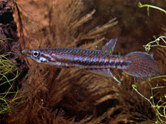|
|||||
|
Ivory Coast |
|
Guinea-Bissau |
|
Ruinmans. |
|
Chad
|
|
Guinea
|
|
Benin
We netted these killifish in the So River northwest of Cotonou. |
|
Ghana. Collected by Lawrence_Kent 2022. |
|
Togo |





















